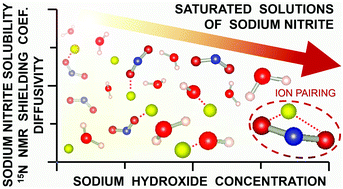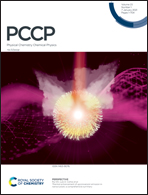Hydroxide promotes ion pairing in the NaNO2–NaOH–H2O system†
Abstract
Nitrite (NO2−) is a prevalent nitrogen oxyanion in environmental and industrial processes, but its behavior in solution, including ion pair formation, is complex. This solution phase complexity impacts industries such as nuclear waste treatment, where NO2− significantly affects the solubility of other constituents present in sodium hydroxide (NaOH)-rich nuclear waste. This work provides molecular scale information into sodium nitrite (NaNO2) and NaOH ion-pairing processes to provide a physical basis for later development of thermodynamic models. Solubility isotherms of NaNO2 in aqueous mixtures with NaOH and total alkalinity were also measured. Spectroscopic characterization of these solutions utilized high-field nuclear magnetic resonance spectroscopy (NMR) and Raman spectroscopy, with additional solution structure detailed by X-ray total scattering pairwise distribution function analysis (X-ray PDF). Despite the NO2− deformation Raman band's insensitivity to added NaOH in saturated NaNO2 solutions, 23Na and 15N NMR studies indicated the Na+ and NO2− chemical environments change likely due to ion pairing. The ion pairing correlates with a decrease in diffusion coefficient of solution species as measured by pulsed field gradient 23Na and 1H NMR. Two-dimensional correlation analyses of the 2800–4000 cm−1 Raman region and X-ray PDF indicated that saturated NaNO2 and NaOH mixtures disrupt the hydrogen network of water into a new structure where the length of the O⋯O correlations is contracted relative to the typical H2O structure. Beyond describing the solubility of NaNO2 in a multicomponent electrolyte mixture, these results also indicate that nitrite exhibits greater ion pairing in mixtures of concentrated NaNO2 and NaOH than in comparable solutions with only NaNO2.



 Please wait while we load your content...
Please wait while we load your content...